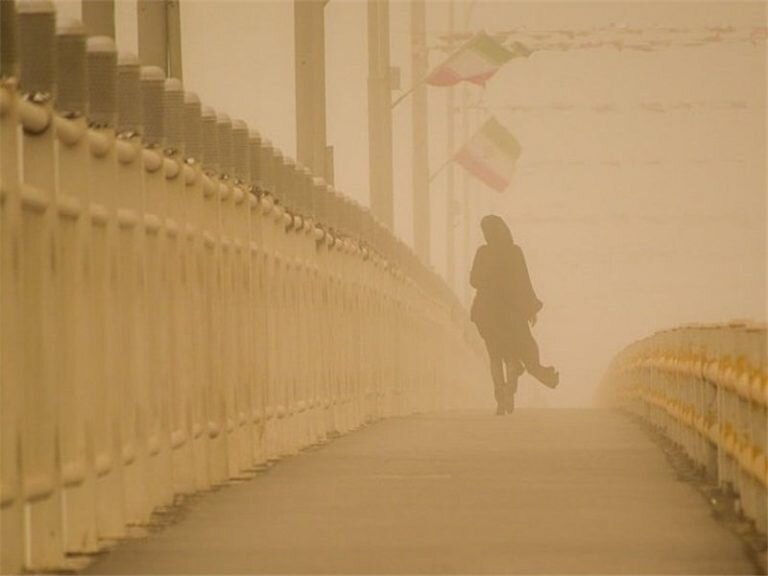€100m proposed to mitigate SDSs

TEHRAN – The national budget bill for the next calendar year (starting on March 20, 2020) has proposed €100 million from National Development Fund to tackle sand and dust storms (SDSs), IRNA reported on Saturday.
Last year, €100 million from National Development Fund was earmarked to SDSs mitigation, however, 50 percent of which was provided, Ali Mohammad Tahmasebi, head of the national working group for SDSs mitigation, said.
He further expressed hope that the proposed budget to be approved and provided.
Over the past three years, actions have been taken in three areas of preventive, reformative and revitalizing, and most of which was done by the Ministry of Agriculture and the Department of Environment., he said.
According to the latest statistics, 34.6 million hectares of lands have been identified for dust generation across Iran, 15 to 20 percent of which are highly active, 25 percent are moderately active, about 60 percent of the sources are slightly active. Sections also concerned the Ministry of Health, Meteorological Organization, Geological Survey, and Mineral Explorations, which was very broad and varied in its importance and scope, he added.
He went on to explain that 27 provinces are dealing with sand and dust storms; prevention measures have been taken like launching a warning system, operational activities including runoff management, dredging and moisturizing the dried wetlands which are SDSs hotspots.
Facilitating the entry of water to restore vegetation in dried areas giving raise to SDSs, including, planting seedlings and saplings, he noted.
Last year a series of actions were defined for rangeland and watershed management, including irrigation and planting, which yielded good results, but a number of tasks such as grazing management were also carried out, which was also effective in addition to low cost, he also explained.
Next year, we will be looking for both highly effective and economical solutions, such as grazing management, and limiting livestock entrance to SDSs hotspots, he stated.
34.6 million ha of land turned into SDSs sources
According to the latest statistics, 34.6 million hectares of land has been identified that generate dust, however, internal sources are less severe than the surrounding external hotspots, Tahmasebi said.
He went on to note that 15 to 20 percent of these hotspots are highly active and 25 percent of which are moderately active, about 60 percent of the sources are slightly active, “so we should definitely be alert to SDSs hotspots with low dust generation to prevent them from the intensity.”
SDSs hotspots are spread across 25 provinces of the country, varying in size from province to province, as 5,000 to nearly 6 million hectares identified in each province, therefore, considering the intensity and dispersal in each province, a ten-year plan must be developed to clarify the actions and implementation period, he suggested.
“We work more on internal hotspots, of course, we started cooperation with IMO to identify external dust sources and hotspots around the country, once the results have been determined, we will try to take action on external hotspots in the context of bilateral and multilateral negotiations and requesting help of international bodies in Iran,” he concluded.
Sistan-Baluchestan hit hardest by dust storms
Sistan, located north of Sistan-Baluchestan province, is frequently hit by sand and dust storms.
It was announced that strong SDSs with as fast as 100 kilometers per hour speed have stricken Sistan-Baluchestan province over 19 times since last year.
PM concentration even peaked at 60 times above the safe levels in the region.
The sources of SDSs are both internal and external that usually raise from external hotspots in Afghanistan and move into the Sistan plain and the Hamoun wetland, which is dried and turned into a hotspot.
Now due to the dryness of the Hamoun, the SDSs have been increased. However, heavy rain over the past water year filled Hamoun wetland and contained the issue.
How to mitigate the effects of SDSs
According to EcoMENA, sand and dust storms cause significant negative impacts on society, economy, and environment at a local, regional and global scale. There are three key factors responsible for the generation of sand and dust storms – strong wind, lack of vegetation and absence of rainfall. The environmental and health hazards of such storms cannot be reduced permanently, however, its impact can be reduced by taking appropriate measures.
As the dust cloud rises, it reduces the horizontal visibility which can impact human life in many ways. The fine suspended particles also contain contaminants, bacteria, pollens, which cause negative health impacts such as allergies and respiratory diseases. Dust also carries air borne pollutants such as toxins, heavy metals, salt, sulphur, pesticides, etc. which cause significant health impacts when people inhale the contaminated dust. Dust can corrode buildings and other built infrastructure as it contains a high level of salts.
The effects of sand and dust storms can be reduced by using a number of health and safety measures and environmental control strategies. Large-scale sand and dust storms are generally natural phenomena and it may not be always practicable to prevent it happening. However, control measures can be taken to reduce their impacts. Localized small-scale dust emission due to human-induced activities can be reduced by using temporary mechanical methods such as concrete barrier, mulching, tree buffer, etc.
Taking appropriate control of dust raising factors such as increasing the vegetation cover where possible can help in the stabilization of the soil, sand dunes and form windbreaks.
Additionally, the use of native plants and trees as the buffer can reduce wind velocity and sand drifts at the same increase the soil moisture. Designing buildings appropriately and conduct air infiltration testing during building commissioning can also help the adverse effects of sand and dust storm.
FB/MG
Leave a Comment